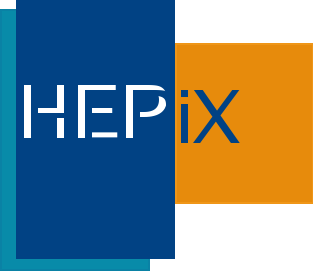With the change of the ATLAS computing model from hierarchical to dynamic, processing tasks are dispatched to sites based not only on availability of resources but also network conditions along the path between compute and storage, which may be topologically and/or geographically distant. We describe a system developed to collect, store, analyze and provide timely access to the network...
Since last Apr.1, SINET that is NREN for universities in Japan has started the operation of 5th generation infrastracture, SINET5. It accepts 100Gbps connection to the backbone from each institutes, and newly provides the direct path from Japan to Europe. KEK is connected to SINET by 120Gbps bandwidth in total and mostly the bandwidth
will be used by the mass data transmission via LHCONE. We...
CERN networks are dealing with an ever-increasing volume of network traffic. The traffic leaving and entering CERN has to be precisely monitored and analysed in order to properly protect the networks from potential security breaches. To provide the required monitoring capabilities, the Computer Security team and the Networking team at CERN have joined efforts in designing and deploying a...
High energy physics experiments produce huge amounts of raw data, while because of the sharing characteristics of the network resources, there is no guarantee of the available bandwidth for each experiment which may cause link competition problems. On the other side, with the development of cloud computing technologies,IHEP have established a cloud platform based on OpenStack which can ensure...
This report from the HEPiX IPv6 Working Group will present activities during the last 6-12 months. With IPv4 addresses running out and with some sites and Cloud providers now wishing to offer IPv6-only CPU, together with the fact that several WLCG sites are already successfully running production dual-stack storage services, we have a plan to support IPv6 CPU from April 2017 onwards. This plan...
What’s been happening in security for HEP? We will discuss the recent trends in the ever changing threat landscape, and the new initiatives being put in place to protect our people, data and services. One such initiative to highlight is our focus on boostrapping international collaboration within research and academia, encouraging communities to participate in intelligence sharing and incident...
Over the last few years, the number of mobile devices connected to the CERN internal network has increased from a handful in 2006 to more than 10,000 in 2015. Wireless access is no longer a “nice to have” or just for conference and meeting rooms, now support for mobility is expected by most, if not all, of the CERN community. In this context, a full renewal of the CERN Wi-Fi network has been...
Over the last few years, the number of mobile devices connected to the CERN internal network has increased from a handful in 2006 to more than 10,000 in 2015. Wireless access is no longer a “nice to have” or just for conference and meeting rooms, now support for mobility is expected by most, if not all, of the CERN community. In this context, a full renewal of the CERN Wi-Fi network has been...
HEP use of cloud services has brought to light various network issues that hamper the full integration of such services with WLCG resources. In this presentation we comment on the issues that have been encountered and present the ongoing actions of the international network community to facilitate the integration of cloud services into the research computing environment.
EduGAIN, the international identity federation, allows users from all over the world to access a globally distributed suite of academic resources. You are most likely already able to use your primary account, from CERN or your home organisation, to tap in to these services! Federated Identity Management, the technology underpinning eduGAIN, brings many benefits for users and organisations...
Providing effective and non-intrusive security within NERSC’s Open
Science HPC environment introduces a number of challenges for both
researchers and operational personnel. As what constitutes HPC expands
in scope and complexity, the need for timely and accurate decision
making about user activity remains unchanged. This growing complexity
is balanced against a backdrop of routine user...
